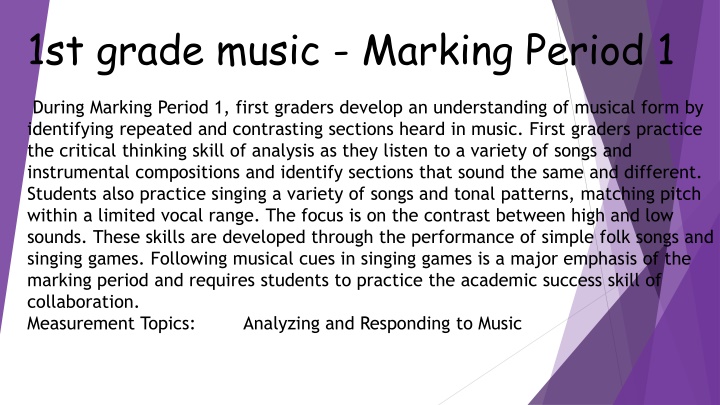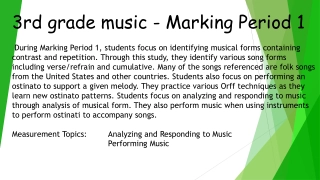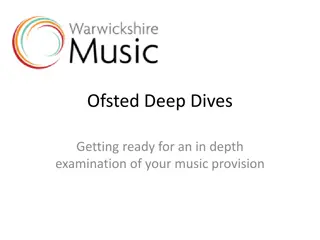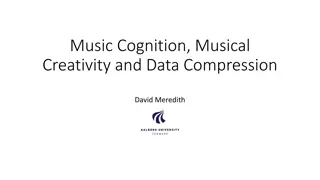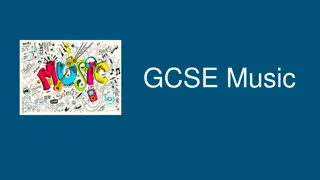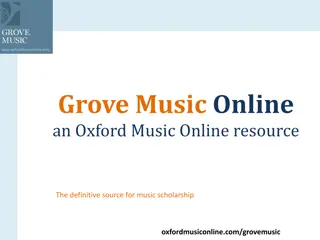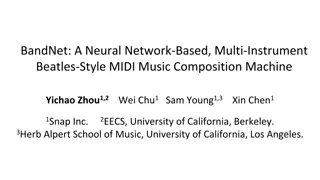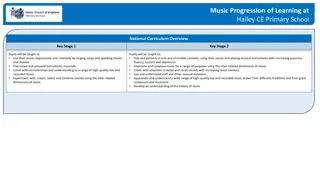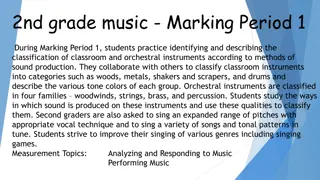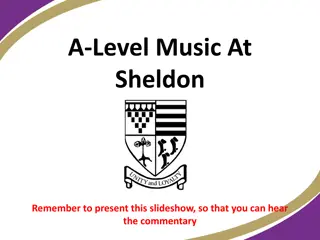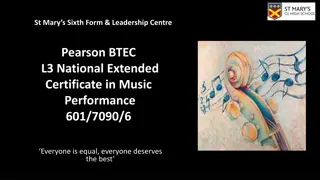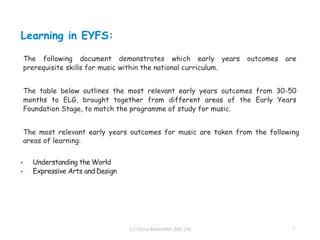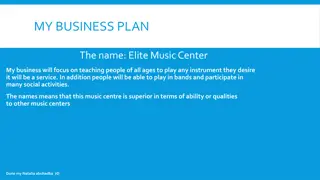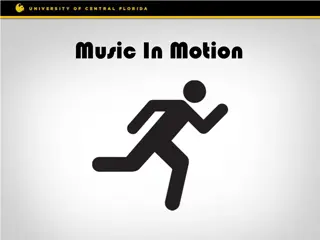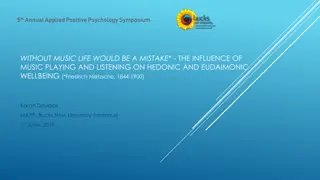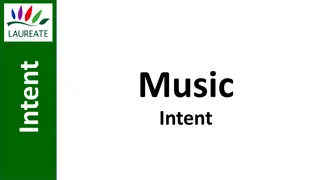First Grade Music Curriculum Overview
First-grade music curriculum is divided into four marking periods focusing on developing musical form understanding, practicing critical thinking through analysis, singing skills, playing classroom instruments, reading and notating simple rhythm and pitch patterns, and creating music. Each marking period builds upon the previous one, gradually introducing new concepts such as contrast in musical elements, reading quarter and eighth note rhythms, creating rhythmic and melodic patterns, and exploring improvisation in jazz. Through a variety of activities, students enhance their musical abilities, critical thinking skills, and collaborative spirit in a fun and engaging learning environment.
Download Presentation

Please find below an Image/Link to download the presentation.
The content on the website is provided AS IS for your information and personal use only. It may not be sold, licensed, or shared on other websites without obtaining consent from the author.If you encounter any issues during the download, it is possible that the publisher has removed the file from their server.
You are allowed to download the files provided on this website for personal or commercial use, subject to the condition that they are used lawfully. All files are the property of their respective owners.
The content on the website is provided AS IS for your information and personal use only. It may not be sold, licensed, or shared on other websites without obtaining consent from the author.
E N D
Presentation Transcript
1st grade music - Marking Period 1 During Marking Period 1, first graders develop an understanding of musical form by identifying repeated and contrasting sections heard in music. First graders practice the critical thinking skill of analysis as they listen to a variety of songs and instrumental compositions and identify sections that sound the same and different. Students also practice singing a variety of songs and tonal patterns, matching pitch within a limited vocal range. The focus is on the contrast between high and low sounds. These skills are developed through the performance of simple folk songs and singing games. Following musical cues in singing games is a major emphasis of the marking period and requires students to practice the academic success skill of collaboration. Measurement Topics: Analyzing and Responding to Music
1st grade music - Marking Period 2 During Marking Period 2, students compare, perform, and move to musical sounds which demonstrate contrasts in fast/slow, loud/soft, long/short, and high/low. They are exposed to music from a variety of cultures and styles in these experiences. Students continue to play classroom instruments and should be able to perform a steady beat on classroom instruments. First grade students learn to read simple rhythm and pitch patterns from iconic notation and use the creative thinking skill of fluency to develop their own iconic notation. By the end of the marking period, they are asked to take intellectual risks by creating simple rhythmic and melodic patterns and notating them using iconic representation. Measurement Topics: Analyzing and Responding to Music Performing Music
1st grade music - Marking Period 3 During Marking Period 3, first graders use effort, motivation, and persistence to practice reading quarter and eighth note rhythms and so-mi pitch patterns. These concepts are explored through folk songs and singing games. Students notate simple rhythm and pitch patterns using iconic representation. In addition, they practice notating pitches placing notes in spaces and around lines. Students learn about improvisation and its use in jazz. Measurement Topics: Creating Music Reading and Notating
1st grade music - Marking Period 4 During Marking Period 4, first graders continue to practice reading simple rhythm and pitch patterns. They are introduced to the sign for a quarter rest as a representation of a silent beat. Experiences with reading music contribute to students ability to notate simple rhythm and pitch patterns, placing notes in spaces and around lines. These tasks require students to monitor their own thinking using metacognition. Much of the focus during this marking period is on creating music. Measurement Topics: Reading and Notating Music Creating Music
